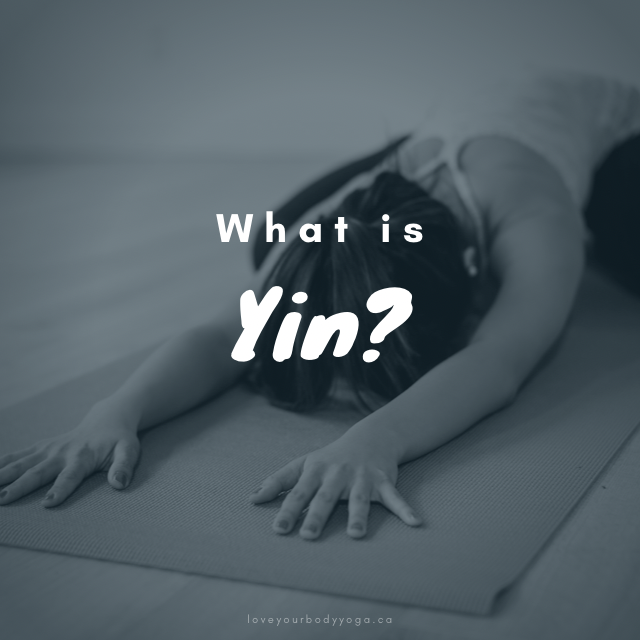What is YIN?
A Yin yoga class focuses on deep stretches that are held for anywhere from 1 – 10 minutes. Yin yoga is often mistaken for being an easy style of yoga, but it can actually be quite challenging due to the long duration of the postures. Most yin yoga postures target the low back and hips, but Yin yoga is also believed to stimulate the organs of the body through meridians, or energy channels. Unlike yang styles of yoga, poses are held passively, with the emphasis being on relaxation rather than strength. In a yang style, stretches are held for less than a minute with a focus on pushing in to the pose with muscular engagement. In yin, the focus is on relaxing in to poses with as little effort as possible.
Getting in to poses
Choose a variation of the pose that feels good for you. There are so many options for each pose. Again, it is non-judgmental; one variation of a pose is no better than another. Everyone holds tension differently in their bodies and from day-to-day the sensations you feel shift and change so each time you come to your mat you may need to choose a different variation.
Holding poses
As you hold a poses, how it feels may change. Any number of feelings may come up: relaxation, tension, discomfort, impatience, heat, etc... A saying in yin is that going deeper in to the pose should feel like an invitation. Although there may be discomfort in poses, nothing should ever be forced. There is very little benefit to pushing through pain, but a lot of benefit to approaching the experience with a sense of curiosity and observing what happens while you hold the pose. It may be hard to tell whether it is your mind or your body that wants to go deeper or take a break. Never feel pressured to continue to hold a pose, especially if you start to experience pain or numbness. The class time allotted to hold the pose doesn’t mean that you will have any benefit from holding it that long.
Some final thoughts
The goal of the teacher and each student may be very different. This is the beauty of listening to your body and learning to customize the poses to suit your own needs. Everyone has the option to create benefit for their individual mind, body and spirit. Relax and enjoy! If you are breathing, you are doing yoga :)
Getting in to poses
Choose a variation of the pose that feels good for you. There are so many options for each pose. Again, it is non-judgmental; one variation of a pose is no better than another. Everyone holds tension differently in their bodies and from day-to-day the sensations you feel shift and change so each time you come to your mat you may need to choose a different variation.
Holding poses
As you hold a poses, how it feels may change. Any number of feelings may come up: relaxation, tension, discomfort, impatience, heat, etc... A saying in yin is that going deeper in to the pose should feel like an invitation. Although there may be discomfort in poses, nothing should ever be forced. There is very little benefit to pushing through pain, but a lot of benefit to approaching the experience with a sense of curiosity and observing what happens while you hold the pose. It may be hard to tell whether it is your mind or your body that wants to go deeper or take a break. Never feel pressured to continue to hold a pose, especially if you start to experience pain or numbness. The class time allotted to hold the pose doesn’t mean that you will have any benefit from holding it that long.
Some final thoughts
The goal of the teacher and each student may be very different. This is the beauty of listening to your body and learning to customize the poses to suit your own needs. Everyone has the option to create benefit for their individual mind, body and spirit. Relax and enjoy! If you are breathing, you are doing yoga :)

